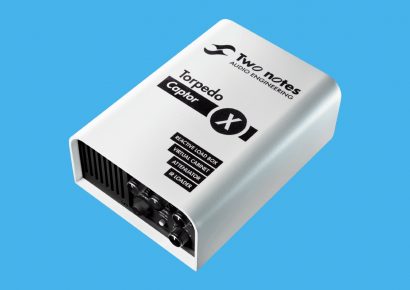JZ Microphones | Enquire for pricing
JZ Microphones are pretty fresh to the scene in comparison to a lot of microphone heavy weights, which I dare say could be referred to as grandparents by now. For a company that has only been around since 2007, these handcrafted Latvian microphones have made some serious headway in establishing themselves in a very competitive market and have earned legitimate street cred from some of the industry’s most respected engineers, mixers, and producers. Having been impressed by the company’s striking, bold, and innovative designs (such as JZ’s equally awesome signature BB29 condenser). I was pretty excited to have a chance to put the Black Hole BH2 through its paces.
Catch up on all the latest music gear reviews here.
Into the Void
To address the obvious straight out of the gate, the BH2 is certainly salient. I’ve never seen or held a microphone quite like it. Its powder coated chassis both looks and feels great, and although the mic is lightweight (perhaps the rather obvious hole in the middle of the chassis having something to do with this), it still feels methodically thought out in design and meticulously engineered. The mounting system is also worthy of note. I’ll admit I was sceptical at first as to how easy and reliable it would be, but was pleasantly surprised at how easy it was to mount and dismount, and I’d go as far to say perhaps easier than conventional shock mounts or spider cradles used for large diaphragm condensers. This convenience can’t be understated when quick adjustments are needed in the middle of a session.
On the spec side, the BH2 is indeed a cardioid polar patterned large diaphragm condenser, housing a 27mm diameter diaphragm, which utilises JZ’s unique Golden Drop Capsule (GDC) technology. This closely guarded secret is said to make the capsule’s diaphragm lighter, giving it a faster response with more clarity and precision, with fewer colourations and distortions in its frequency response. A frequency response is quoted as ranging from 20Hz – 20kHz, with a respectable sensitivity of 21mV/Pa at 1kHz and maximum SPL handling of 134.5dB SPL. The Class A discrete electronics produce a very low quoted self noise operational level of just 6.5dBA, and it was noted during testing that the BH2 was incredibly quiet indeed.
Being a true capacitor design, the BH2 requires 48V phantom power and has a gold pinned XLR connector protruding slightly from the bottom of the chassis. Looking at the frequency chart the BH2 presents as being pretty darn flat, with a gentle lift between 40Hz and 90Hz and again, a very gentle presence lift, starting at around 2kHz and sloping off at about 6kHz. I was curious to hear how this very subtle smiley faced curve was going to play with the various sound sources I planned to throw at it. A minor gripe was the absence of a pad or high pass filter on the microphone itself, but switchable -10dB and -20dB pads are available on the BH1S and BH3 models.
Balance to the Galaxy
I was glad I got the chance to throw the variety of sound sources which I did at the BH2, as it certainly delivered in capturing the essence of each instrument. As for the operating noise, it was whisper quiet.
I started off with an acoustic guitar, changing the mic distance and position at numerous points. What struck me straightaway was the level of nuance it captured, not unlike a nice small diaphragm condenser. In particular, the details of the strings really came out. They weren’t shrill or brittle in timbre though, just simply, detailed and smooth. The bottom end was full and balanced and to my ear, the overall picture of the instrument was captured nicely.
Next up was some percussion, specifically tambourine and egg shakers that needed to fit in a track. Again, the nuance and transient response was accurate and picked up on the subtleties of the eggs being playing towards or across the capsule.
On the same track I recorded some lead vocals. What impressed me here was the level of detail in the top end, hearing that aforementioned subtle presence bump. The presence wasn’t hyped though, and was well balanced with the bottom end, giving an overall pleasantly flat and neutral response compared to other microphones I’ve tested on vocals.
Lastly, I threw the BH2 (alongside a 57) in front of a Vox AC30 to track some rhythm and lead parts. The BH2 produced a rich, full spectrum of sound, giving a very open and full range capture of the amp. Paired with the 57, finding a balance between the two mics was easy, but I’d have happily just taken the BH2 on its own too.
Light in the Darkness
The JZ Microphones Black Hole BH2 strikes a wonderful balance of tonal neutrality, a simple and elegant circuit design, and modern aesthetic flare. Whilst its looks might not necessarily be for everyone, those looking for something that isn’t overly hyped or coloured, but rather flat, nuanced and detailed, the BH2 would likely be a welcomed addition to any engineer’s mic locker. A real, modern studio workhorse.
Find out more at JZ Microphone’s website.

